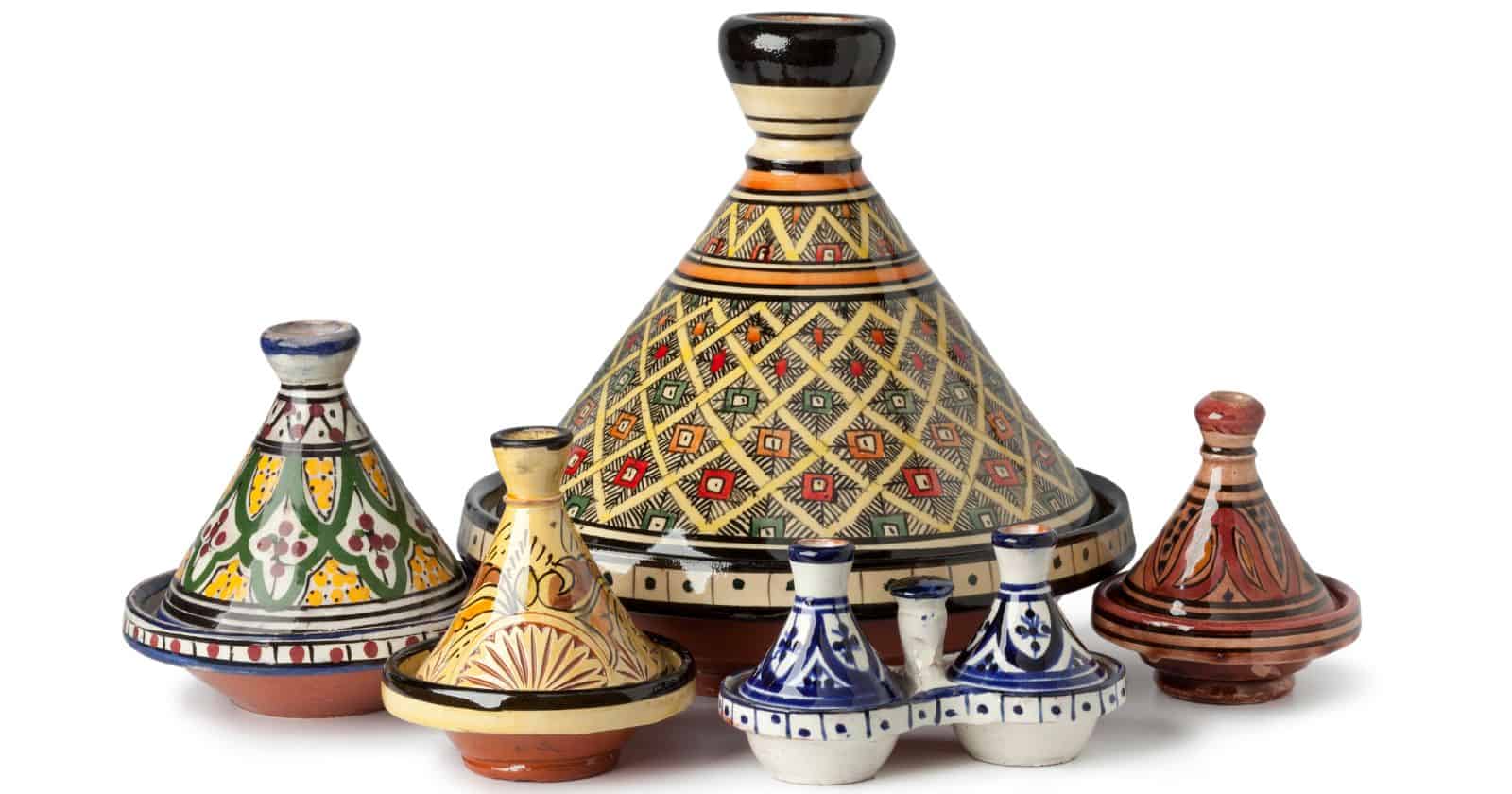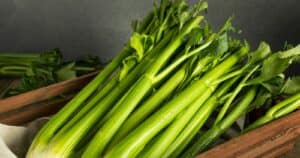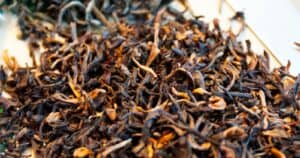Tagine, a traditional North African dish with a rich history and a deliciously complex flavor profile. But if you’re overwhelmed by the variety of tagine dishes and don’t know where to start, don’t worry.
In this article, we’ll give you the lowdown on this classic dish, from its ingredients and cooking methods to its cultural significance and regional variations.
So if you’re ready to
What is Tagine?
Tagine is a slow-simmered stew of northwestern Africa traditionally cooked in a covered earthenware pot. This pot called a tagine, has a conical lid that helps to trap steam and circulate it back into the stew, resulting in succulent and tender meat and vegetables.
The dish is also named after the pot in which it is cooked and is known for its unique combination of sweet and savory flavors.
History and Ingredients
The tagine is a traditional dish that originated in Morocco, but is now famous throughout North Africa and the Middle East.
The word typically consists of tender chunks of meat, such as lamb or chicken, and various vegetables, like potatoes, carrots, onions, and tomatoes.
It is also often flavored with different spices, including cumin, cinnamon, ginger, and saffron. Additionally, Tagine can be made with beans or lentils instead of meat, which makes it an excellent option for vegetarians.
Cooking Techniques
In traditional Moroccan cooking, the tagine is slow-cooked over low heat on a charcoal fire, which results in tender, succulent meat, and vegetables.
However, most people use a tagine on a gas or electric stove in modern times. If you don’t own a tagine, you can still prepare this dish in a heavy-bottomed pot with a tight-fitting lid.
How Did Tagine Get Its Name?
Tagine got its name from the earthenware dish in which it is cooked. The word “tagine” is an Arabic term that means “earthenware dish,” and it is also a derivative of the Greek word “têganon,” which means “earthen dish.” The pot used to cook the tagine is designed to retain heat and moisture, creating a unique taste and texture.
The origins of the tagine are often credited to Harun al Rashid, a ruler of the Islamic empire in the late 8th century. In the 9th century, it was introduced to North Africa by Arab conquerors.
Tagine is a popular North African dish known for its unique blend of spices, meat or vegetables, and fruits. Here are some interesting facts about tagine that you may not know:
- Tagine is often served with couscous, a pasta made from semolina flour.
- The most traditional tagine is made with lamb or chicken, but vegetable and fish tagines are also famous.
- The spices commonly used in tagine include cumin, coriander, ginger, and cinnamon.
- Tagine is often sweetened with dried fruits such as apricots, prunes, or dates.
- The lid of the tagine pot is often decorated with a cone-shaped knob that helps to trap steam and keep the dish moist.
Key Ingredients of Tagine
Tagine is a traditional Moroccan dish that is made with a combination of various ingredients. The critical elements of tagine can vary, but some standard features are as follows:
- Vegetables: The most commonly used vegetables in tagine are carrots, parsnips, onions, and potatoes. These vegetables create a delicious flavor and unique texture to the dish.
- Meat: Meat such as lamb or chicken is a common ingredient in meat-based tagines. These meats are perfect for tagine as they are tender and can be quickly cooked.
- Spices: Spices are essential to tagine and give it a unique flavor. Spices include cinnamon, turmeric, saffron, ginger, cumin, paprika, nutmeg, peppercorn, and ground coriander.
- Sweetness: Dried apricots and almonds toasted in butter can provide sweetness to the dish. These ingredients balance the flavor and add a unique touch to the plate.
Tagine is a dish that can be made with various ingredients, but the result is always delicious. Here are some additional elements that you might come across when making tagine:
- Preserved lemons: Preserved lemons add a distinctive citrus flavor to the dish.
- Olives: Olives can add a salty and savory flavor to the dish.
- Prunes: Prunes add a rich and deep sweetness to the dish.
- Harissa: Harissa is a spicy paste that can be added to the dish for some heat.
- Chickpeas: Chickpeas can be added to the dish for extra texture and protein.
Savory Meats in Tagine
Savory meats like lamb, beef, and chicken are commonly used in tagine recipes. These meat-based tagines often feature preserved ingredients and can provide a delightful blend of sweet and savory flavors.
Chicken tagine with preserved lemons and olives is a popular dish. The combination of tangy lemons and salty olives perfectly complements tender chicken meat. Another classic tagine is lamb or beef with prunes, which creates a rich and earthy taste.
Moroccan lamb tagine is a complex and delicious dish with savory meats mixed with sweet and nutty ingredients like chickpeas, dates, oranges, and almonds. The tender lamb, paired with the sweet and nutty flavors of the fruit and nuts, creates an unforgettable feast for the senses.
Sweet Dried Fruits in Tagine
Sweet dried fruits are a popular addition to tagine recipes. You can add figs, dates, apricots, and raisins to provide sweetness to the dish.
A chicken tagine with honey-infused apricots adds sweetness and savor to the meal. Almost all tagine recipes include a combination of meat and some sorts of dried fruits like prunes, raisins or apricots.
Besides tagine, people also use dried fruits to add natural sweetness boosts to other recipes.
Did you know that dried fruits can boost your energy and provide essential nutrients for your body? Here are some facts about dried fruits in tagines:
- Dried fruits are a rich source of vitamins, antioxidants, potassium, and fiber.
- Dried fruits have a longer shelf life compared to fresh fruits.
- Dried fruits can be used as a healthy snack alternative to candy.
- Moroccan tagines with sweet dried fruits are an excellent source of protein and essential vitamins.
You can also add sweet dried fruits to enhance other dishes besides the tagine. Here are some famous words that use sweet dried fruits:
- Puddings with dates and raisins provide natural sweetness and nutrition to the pudding.
- Adding dried apricots and figs to a salad makes it more flavorful and nutrient-rich.
- Oatmeal with dates, raisins, or prunes is a perfect breakfast option, rich in fiber and essential nutrients.
How to Cook Tagine Traditionally
Tagine is traditionally cooked over a charcoal fire, but nowadays, you can prepare it at home using your oven or stovetop. To get the best results, seasoning the tagine beforehand is crucial. Here’s how to cook tagine traditionally:
Seasoning the Tagine:
Before use, season the tagine by soaking it in water for an hour. This helps to strengthen the tagine, seal the pores, and remove the raw clay’s taste.
Then, rub the inside with olive oil and place it in a cool oven at 350°F for 2 hours or until it’s dried; repeat if necessary.
Choosing ingredients:
Typically, a tagine combines meat, vegetables, and fruits like apricots, dates, or raisins. Chicken, lamb, or beef are common meats used in a tagine, but you can use other meats or vegetables according to your preference.
Cook slow and steady:
Start by sautéing onions and garlic in the tagine with olive oil. Then add the meat and cook it on low heat until it browns on all sides.
Next, layer in your vegetables like carrots and sweet potatoes, and add the dried fruits. Add some spices, like cumin, paprika, cinnamon, and a bit of water. Don’t stir the tagine; let the heat do the work.
Cook until tender:
Cover the tagine with the lid and cook on low heat for 2-3 hours or until the meat and vegetables are tender. You can check the tagine occasionally and add more water if required.
Serve and enjoy:
Once the tagine is ready, remove it from the heat and rest for 10-15 minutes. Then, garnish with fresh herbs like cilantro or mint, and serve with couscous or bread. Bon appétit!
Regional Variations of Tagine
Tagine is a popular North African dish that has many regional variations. Moroccan tagine is the most well-known type of tagine, but different countries have their versions of this dish. Let’s explore some of the regional variations of tagine:
- Moroccan Tagine – As mentioned, this is the most popular type of tagine. It includes different kinds of tagine, such as chicken tagine with harissa olives, lamb and butternut squash tagine with apricots and almonds, beef tagine, vegetable tagine, kefta mkawara, fish tagine, green bean tagine, and artichoke and sweet pea tagine.
- Algerian Tagine – Algerian cuisine has its version of tagine, which usually includes lamb or chicken with potatoes and carrots. It has a mild flavor with a sweet and savory taste that differs from the Moroccan tagine.
- Tunisian Tagine – Tunisian tagine usually includes fish or seafood, such as shrimp, and is cooked with tomatoes, onions, and different types of spices. It is generally quite spicy and has a distinct flavor unique to Tunisia.
- Libyan Tagine – Libyan tagine usually includes goat or lamb and is cooked with vegetables like potatoes, carrots, and onions. It is generally quite spicy and has a rich, hearty flavor unique to Libya.
Tagine Substitute
A Dutch oven is an excellent alternative for those without a traditional Moroccan tagine. Beef is a flavorful substitution for lamb. Tin foil can replace the lid when making chicken tagine.
If you’re looking to make a tagine but need the traditional Moroccan cooking pot, a Dutch oven is an excellent substitute. A comprehensive, shallow Dutch oven or a heavy skillet with a tight-fitting lid can do the trick.
For those who prefer beef over lamb, it’s an excellent substitution for meat-based tagines. Beef has a less gamy taste and a slightly sweeter flavor, making it an excellent alternative to lamb.
If you’re missing the lid to your cooking pot, don’t worry, tin foil can be used as a replacement. Cover your chicken tagine with tin foil and let it cook perfectly.
When it comes to tagine substitutes, there are many excellent options available. Don’t be afraid to experiment and try new substitutions to find what works best for you.
Whether using a Dutch oven, beef instead of lamb, or tin foil for your lid, your tagine will still be delicious and flavorful.





